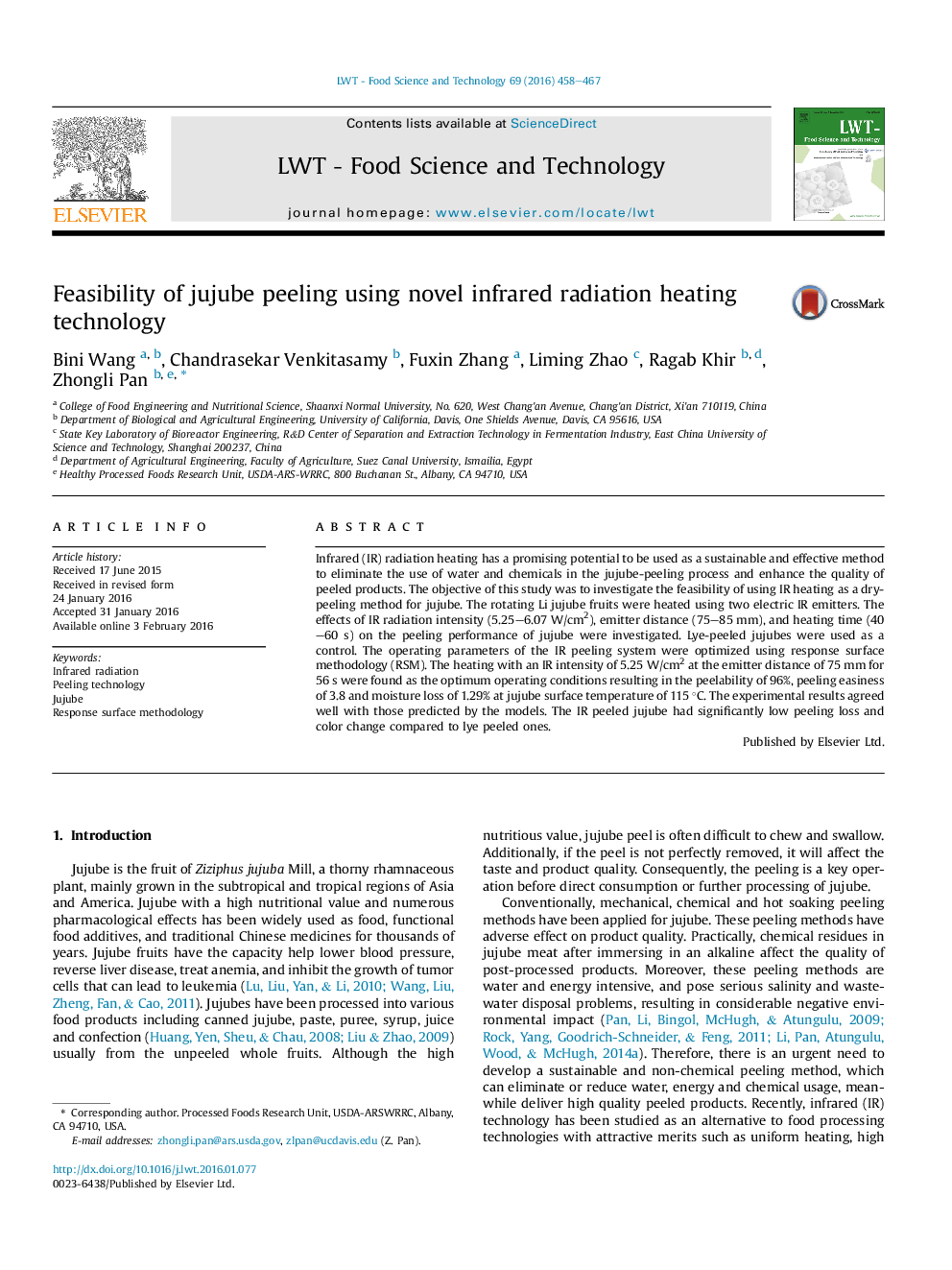| Article ID | Journal | Published Year | Pages | File Type |
|---|---|---|---|---|
| 4563769 | LWT - Food Science and Technology | 2016 | 10 Pages |
•Infrared (IR) radiation peeling technique was successfully applied for jujube skin removal.•Optimizing peeling condition to obtain the maximum peeling performance.•IR peeled jujube had lower peeling loss and color change compared to lye peeled ones.
Infrared (IR) radiation heating has a promising potential to be used as a sustainable and effective method to eliminate the use of water and chemicals in the jujube-peeling process and enhance the quality of peeled products. The objective of this study was to investigate the feasibility of using IR heating as a dry-peeling method for jujube. The rotating Li jujube fruits were heated using two electric IR emitters. The effects of IR radiation intensity (5.25–6.07 W/cm2), emitter distance (75–85 mm), and heating time (40–60 s) on the peeling performance of jujube were investigated. Lye-peeled jujubes were used as a control. The operating parameters of the IR peeling system were optimized using response surface methodology (RSM). The heating with an IR intensity of 5.25 W/cm2 at the emitter distance of 75 mm for 56 s were found as the optimum operating conditions resulting in the peelability of 96%, peeling easiness of 3.8 and moisture loss of 1.29% at jujube surface temperature of 115 °C. The experimental results agreed well with those predicted by the models. The IR peeled jujube had significantly low peeling loss and color change compared to lye peeled ones.
